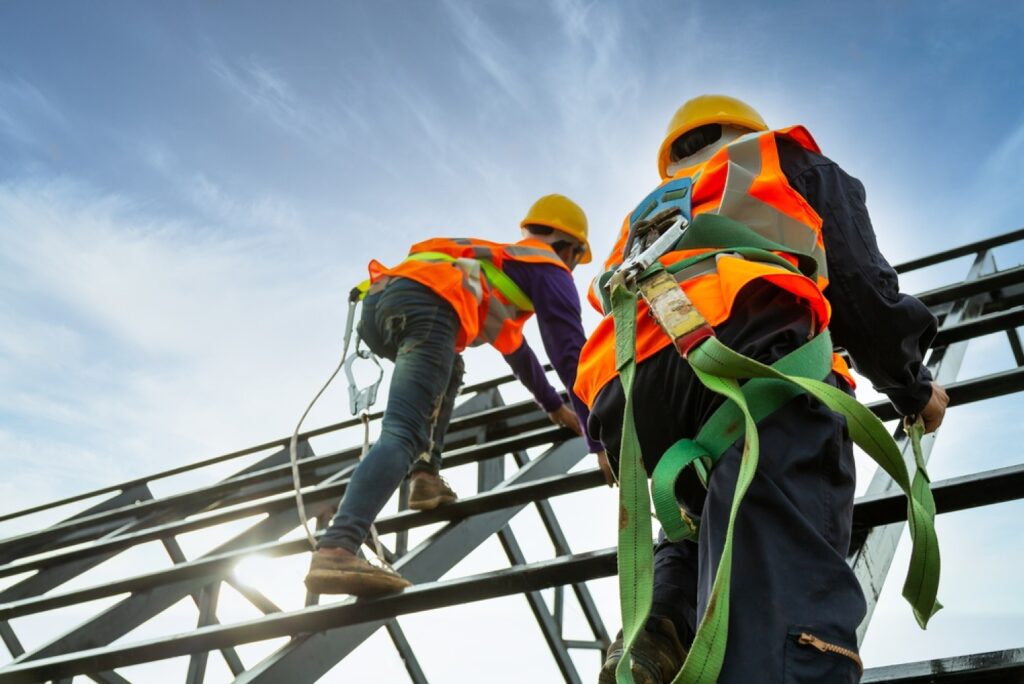In the Philippines, fall-related accidents remain a significant safety concern across various industries. According to recent statistics, falls from heights account for a substantial percentage of workplace injuries and fatalities. As businesses strive to improve workplace safety, fall arrest lifeline systems have emerged as a critical solution. These systems not only protect workers but also ensure compliance with stringent safety regulations. This blog explores the successful implementations of fall arrest lifeline systems across the Philippines, highlighting their effectiveness and impact.
Importance of Fall Protection
Statistics and Facts: Falls from heights are one of the leading causes of serious workplace injuries and fatalities. In the Philippines, industries such as construction, telecommunications, and manufacturing face high risks associated with working at elevated positions. According to the Department of Labor and Employment (DOLE), fall-related incidents contribute to a significant portion of workplace accidents. Ensuring that proper fall protection measures are in place is crucial to safeguarding workers’ lives.
Regulations: The Philippines has established regulations to ensure fall protection in the workplace. The Occupational Safety and Health Standards (OSHS) mandate the use of appropriate fall protection systems for employees working at heights. Compliance with these regulations not only enhances safety but also helps businesses avoid legal and financial repercussions.
Key Components of Fall Arrest Lifeline Systems
Horizontal Lifelines
Definition: Horizontal lifelines are systems that provide continuous fall protection across large work areas. These systems consist of flexible lifelines installed between secure anchor points, allowing workers to move horizontally while remaining connected.
Applications: Commonly used on rooftops, construction sites, and industrial facilities, horizontal lifelines are ideal for areas where workers need freedom of movement along a specific path.
Benefits: They offer continuous protection and the flexibility to move across large areas, making them essential for tasks that require mobility.
Vertical Lifelines
Definition: Vertical lifelines are systems that provide fall protection during vertical ascent or descent. They include vertical ropes or cables, along with connectors and anchorage points.
Applications: Vertical lifelines are frequently used in industries such as telecommunications, wind energy, and confined space entry, where workers need to climb or descend.
Benefits: They ensure safety during climbing and descending activities, reducing the risk of falls in vertical work environments.
Overhead Lifelines
Definition: Overhead lifelines are installed above the worker, typically on structures or ceilings, to provide fall protection for tasks performed below the lifeline.
Applications: These systems are commonly used in manufacturing facilities, warehouses, and assembly lines, where workers need to move freely beneath the lifeline.
Benefits: Overhead lifelines offer protection while allowing workers to move directly below, enhancing safety in overhead work environments.
Rail-Type Lifelines
Definition: Rail-type lifelines are made from aluminum alloy with an anodized finish, designed to meet EN 795:2012 class D standards.
Applications: Suitable for both fall arrest and abseiling purposes, these rail systems are used in environments requiring high durability and resistance to marine conditions.
Benefits: They provide robust protection against falls and are resistant to corrosion, making them ideal for harsh environments.
Successful Implementations Across the Philippines
Construction Site in Metro Manila: In a recent project at a high-rise construction site in Metro Manila, 828 Cable System Inc. implemented a comprehensive horizontal lifeline system. The installation included flexible lifelines between multiple anchor points, enabling construction workers to move safely across the site. The system significantly reduced the risk of falls, improved overall safety, and allowed for efficient workflow on the construction site.
Manufacturing Facility in Cebu: At a manufacturing facility in Cebu, an overhead lifeline system was installed to provide fall protection for workers on assembly lines. The system was mounted on ceiling structures, allowing workers to move freely underneath while remaining securely connected. The implementation of this system led to a notable decrease in fall-related incidents and enhanced the safety of the working environment.
Telecommunications Project in Davao: For a telecommunications project in Davao, 828 Cable System Inc. deployed vertical lifeline systems to ensure safety during the installation and maintenance of communication towers. The vertical lifelines, equipped with reliable connectors and anchorage points, provided essential fall protection for workers ascending and descending the towers. The project was completed successfully with improved safety measures and minimal incidents.
The Future of Fall Protection in the Philippines
Trends: The future of fall arrest lifeline solution in the philippines is likely to see advancements in technology and innovations in safety equipment. Trends such as smart lifeline systems with integrated monitoring and real-time alerts are emerging.
Innovations: New developments in fall arrest technology are focused on enhancing user comfort, improving durability, and increasing adaptability to different work environments. Staying updated with these innovations will help businesses maintain high safety standards.
Takeaway
Fall arrest lifeline systems play a vital role in safeguarding workers at heights, reducing the risk of falls, and ensuring compliance with safety regulations. The successful implementations across the Philippines demonstrate the effectiveness of these systems in enhancing workplace safety. Businesses are encouraged to assess their fall protection needs and invest in reliable, customized solutions to protect their workforce.




